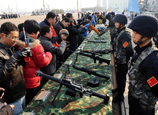
Since the United States adjusted its global strategy to return to the Asia-Pacific region, China-U.S. strategic relations and China's security environment has undergone significant historical changes. From a geopolitical perspective, since the end of the Cold War, the U.S. global strategy has gone through two major historical stages. In the first 10 years (in the 1990s), the strategic focus was on Eastern Europe. The main strategy was presented by the NATO’s eastward expansion and European Union’s eastward expansion. In the first 10 years in the new century (2000-2010), the strategic focus is to expand in the Middle East and Central Asia, with launching wars in Afghanistan and Iraq as its main strategy.
Around the second 10 years in the new century, the United States has ceased its strategic task in Central Asia and the Middle East for a while. Despite that the war in Afghanistan and Iraq is not very smooth, the United States succeeded in overthrowing the anti-American regimes in Afghanistan and Iraq and established the pro-American regimes. Therefore, the strategic focus of the United States shifting from Central Asia and the Middle East to East Asia entirely followed its strategic step as planned.
Since the adjustment of the U.S. strategic focus, a series of its strategic initiatives in East Asia can be summarized as follows: Politically establishing united frontline around China; making military deployment targeted at China; and undermining the economic influence of China. Out of the hegemonic geopolitical need, the United States will not allow the emergence of a unified geopolitical plate that is out of its control on the other side of the Pacific. In addition, the most developed and prosperous cities are gathered in the coastal region of southeast China, therefore the region is vital for Chinese economy. As the main transportation mode for China's foreign trade and energy supply is via the sea route, taking control of the transportation line from West Pacific Ocean to India via Malacca means seizing the lifeline of the Chinese economy. Therefore, it is necessary for the United States to put its strategic focus on Asia, especially East Asia, which is fatal for China.















 Many parts of Jiangsu see snowfall
Many parts of Jiangsu see snowfall


![]()
